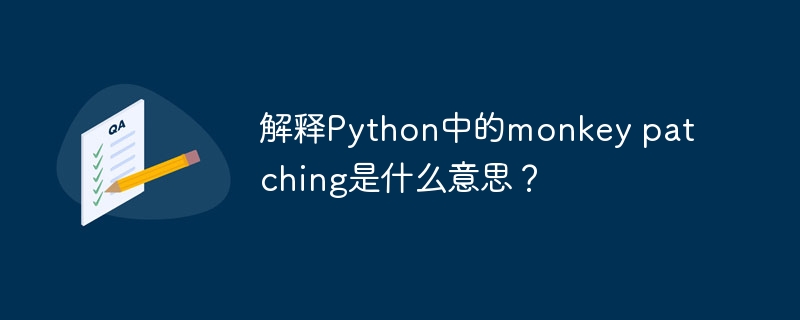Home >Backend Development >Python Tutorial >Explain what monkey patching in Python means?
Explain what monkey patching in Python means?
- PHPzforward
- 2023-08-19 11:53:161215browse

Monkey patching is the technique of dynamic modification of a piece of code at the run time. Actually by doing monkey patch we change the behavior of code but without affecting the original source code.
history
The term Monkey patch is derived from guerrilla patch, which almost means gorilla and can define the monkey species. Guerrilla patching refers to making changes secretly. But monkey patch sounds easier to pronounce, so it is now called "Monkey patch". In the word "Monkey-patch", monkey defines the word dynamic.
Monkey patching in python
Monkey patching in python refers to modifying or updating a piece of code or class or any module at the runtime. In simple words, we can change the behavior or working of a class/ module at the runtime without changing the whole python code . But sometimes monkey patching is considered bad practice because the definition of object does not accurately describe how the object is behaving in the code.
Example
class first:
def print(self)
print(“hello world”)
Output
If we run the above code it will generate the following output −
Hello world
After Code Monkey Patch
Example
Import monkey def monkey_function(self): print(“Hello world”) # updating the print() with monkey_function() monkey.A.print = monkey_function # revoking method print() as method monkey_function() obj = monkey.A() obj print()
Output
If we run the above code it will generate the following output −
Hello world
The above is the detailed content of Explain what monkey patching in Python means?. For more information, please follow other related articles on the PHP Chinese website!

